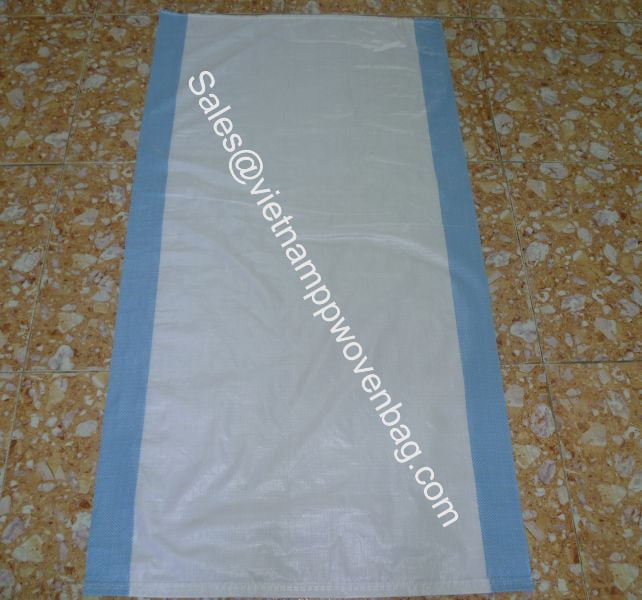In the ever-evolving world of emergency preparedness and disaster mitigation, Empty Sandbag has long been a crucial tool. However, the traditional approach of filling bags with sand has given rise to a more sustainable and practical alternative: empty sandbags. These versatile containers offer a range of benefits, from easy storage and transportation to their potential for reuse and repurposing.

Ingredients for Making Empty Sandbags
The key to creating effective empty sandbags lies in the careful selection of materials. The most commonly used material for this purpose is polypropylene, a durable and weather-resistant synthetic fabric.
Material Composition
Polypropylene is a thermoplastic polymer that is widely used in a variety of applications, including packaging, textiles, and construction materials. This material is known for its exceptional strength, resistance to chemicals and moisture, and ability to withstand harsh environmental conditions.
Bag Dimensions and Specifications
Empty sandbags come in a range of sizes, with the most common dimensions being 14 inches by 26 inches. These bags are typically designed to hold up to 50 pounds of sand or other fill material, making them suitable for various applications, from flood control to soil stabilization.
Sourcing Empty Sandbags
Empty sandbags can be purchased from a variety of suppliers, both online and in local hardware stores or disaster preparedness outlets. It is important to ensure that the bags meet the necessary specifications and are of high quality to ensure their durability and effectiveness.
Cost Considerations
The cost of empty sandbags can vary depending on the supplier, quantity, and any customization requirements. Generally, these bags can be purchased at a relatively low cost, making them an affordable option for individuals and organizations alike.
Why Choose Empty Polypropylene Sandbags?
The decision to use empty polypropylene sandbags over traditional sand-filled bags is driven by several key advantages.
Ease of Transport and Storage
Empty sandbags are significantly lighter and more compact than their sand-filled counterparts, making them much easier to transport and store. This is particularly beneficial in emergency situations when time and logistical considerations are critical.
| Attribute | Sand-Filled Bags | Empty Sandbags |
|---|---|---|
| Weight | Heavy (50 lbs or more) | Lightweight (a few ounces) |
| Volume | Bulky and space-consuming | Compact and easily storable |
| Handling | Cumbersome and difficult to move | Easily transported and maneuvered |
Versatility and Reusability
Empty sandbags can be filled with a variety of materials, depending on the specific needs of the situation. This versatility allows for greater adaptability and the ability to tailor the bags to different applications, such as flood control, soil stabilization, or even temporary shelter construction.
- Sand
- Gravel
- Dirt
- Crushed Rock
- Agricultural Byproducts (e.g., rice hulls, corn husks)
Furthermore, empty sandbags can be reused multiple times, reducing waste and making them a more sustainable option compared to single-use sand-filled bags.
Cost Savings
The cost of empty sandbags is generally lower than that of pre-filled sand bags, as the latter require the additional expense of the sand or other fill material. This cost-effective approach can be particularly beneficial for large-scale projects or organizations with limited budgets.
Environmental Considerations
The environmental impact of using empty sandbags is significantly lower than that of traditional sand-filled bags. By eliminating the need to transport and dispose of large quantities of sand, the carbon footprint associated with the use of empty sandbags is greatly reduced.
Preserving and Reusing Empty Polypropylene Sandbags
To ensure the long-term viability and effectiveness of empty polypropylene sandbags, it is important to properly store, maintain, and repurpose them.
Proper Storage Techniques
Storing empty sandbags correctly is crucial to preserving their integrity and extending their lifespan. The following guidelines should be followed:
- Store bags in a cool, dry, and well-ventilated area, away from direct sunlight and moisture.
- Avoid placing heavy objects on top of the bags, as this can compromise the material.
- Stack the bags neatly and securely to prevent damage during storage.
- Regularly inspect the bags for any signs of wear, tear, or degradation, and replace any damaged ones.
Cleaning and Maintenance
Keeping empty sandbags clean and well-maintained is essential for their continued use. Here are some recommended cleaning and maintenance practices:
- Shake or brush off any dirt, debris, or foreign matter from the bags.
- Rinse the bags with clean water, if necessary, to remove any stubborn stains or residue.
- Allow the bags to dry completely before storing them.
- Inspect the bags for any signs of damage, such as rips, tears, or fraying, and repair them as needed.
Repurposing and Upcycling
Once empty sandbags have served their initial purpose, they can be repurposed or upcycled into a variety of useful items, further extending their lifespan and reducing waste.
- Sandbag Gardening Containers: Empty bags can be used as low-cost, durable planters for gardening, allowing for improved soil drainage and aeration.
- Erosion Control: Filled with soil or other natural materials, empty sandbags can be used to create temporary barriers or retaining walls to prevent soil erosion.
- Insulation and Padding: The polypropylene material of empty sandbags can be used as insulation for structures or as padding for various applications.
- Crafts and DIY Projects: Empty sandbags can be repurposed into a wide range of craft and DIY projects, such as tote bags, rugs, or decorative items.
Conclusion
In a world increasingly focused on sustainability and environmental responsibility, the use of empty sandbags offers a practical and versatile solution for emergency preparedness and disaster mitigation. By leveraging the durability and reusability of polypropylene, these bags provide a cost-effective and eco-friendly alternative to traditional sand-filled options. If you are looking for a reliable partner in the field of packaging, let Huong Sen Packaging do it. We are committed to providing you with an outstanding shopping experience and meeting all your expectations.













